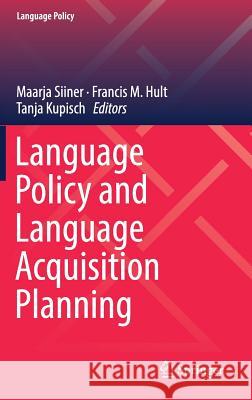Language Policy and Language Acquisition Planning » książka
topmenu
Language Policy and Language Acquisition Planning
ISBN-13: 9783319759623 / Angielski / Twarda / 2018 / 255 str.
Kategorie:
Kategorie BISAC:
Wydawca:
Springer
Seria wydawnicza:
Język:
Angielski
ISBN-13:
9783319759623
Rok wydania:
2018
Wydanie:
2018
Numer serii:
000258952
Ilość stron:
255
Waga:
0.55 kg
Wymiary:
23.39 x 15.6 x 1.6
Oprawa:
Twarda
Wolumenów:
01
Dodatkowe informacje:
Wydanie ilustrowane











